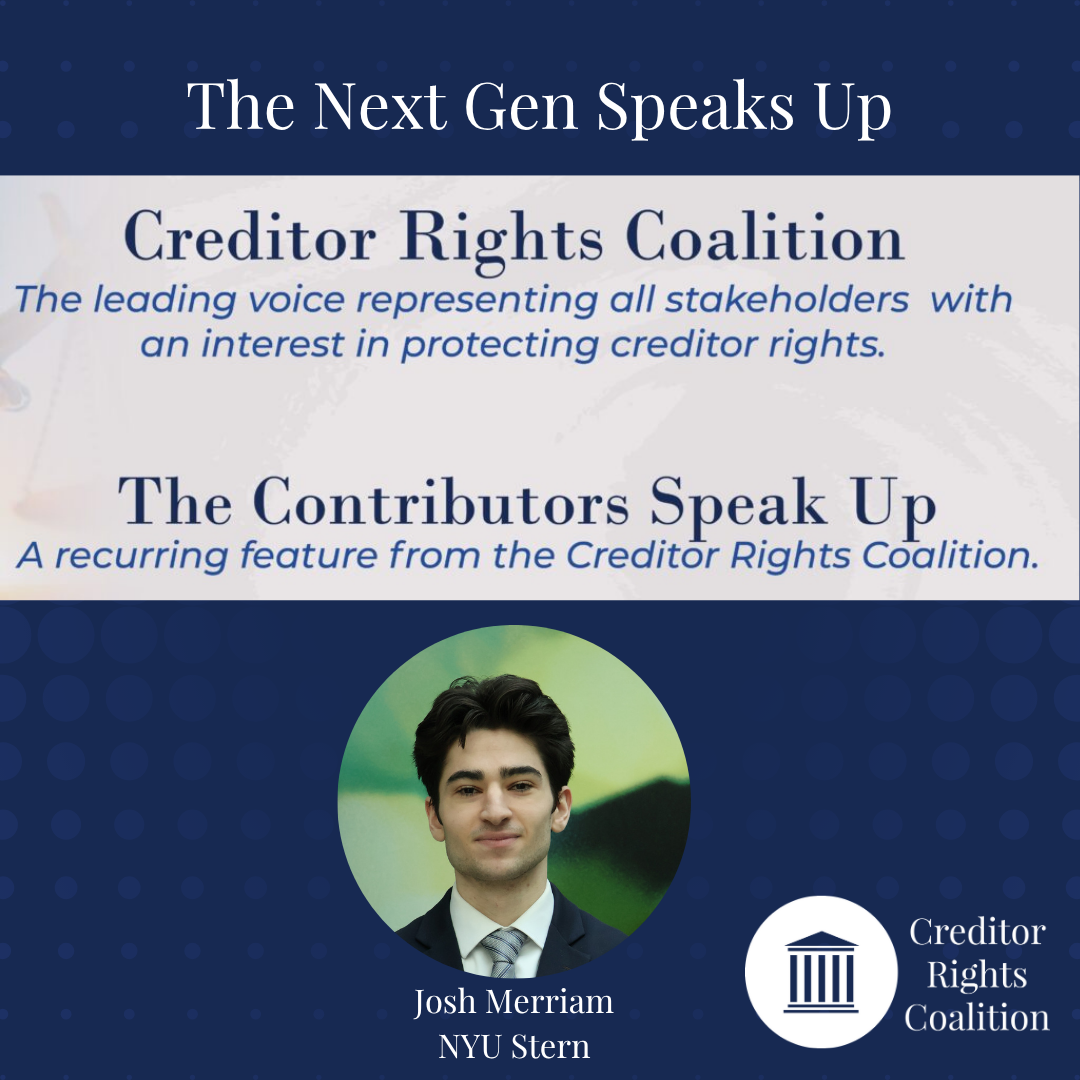Convergeone and how the ‘art of the deal’ in distress just got a lot more artistic

By Josh Merriam
Look, the basic organizing principle of finance, and especially of a good old-fashioned corporate bankruptcy, is that some people are more equal than others. The big creditors with the sharpest elbows, the most expensive lawyers, and the debtor on speed dial have always gotten the best deals. That was the point. You formed a club, you cut a deal in a smoky backroom (or, you know, a Zoom call with virtual backgrounds), and you presented it to the minority lenders as a fait accompli. This was not a scandal; it was just how business was done.
Well, a federal judge in Texas has decided to spoil the fun. In a ruling that sent shockwaves through the genteel world of distressed debt, U.S. District Judge Andrew Hanen looked at the cozy arrangement in the ConvergeOne bankruptcy and essentially said, “No, you can’t do that.” He established a revolutionary principle, which is that the mere opportunity to get a good deal is, itself, part of the deal. And if you don’t offer it to everyone, you’re breaking the rules. This is, for the bankruptcy business, a genuinely wild new state of affairs.
The Smoky Backroom Playbook
To appreciate the earthquake, you have to admire the elegant simplicity of the machine it broke. Imagine you’re a company in Chapter 11. Your most valuable asset isn’t a factory or a patent; it’s certainty. The chaos of bankruptcy is a bonfire of value, and you need to put it out, fast. How? You call up your biggest, friendliest creditors and cut a deal.
The deal usually involved two things: an Equity Rights Offering (ERO), where creditors get to buy stock in the NewCo for pennies on the dollar, and Debtor-in-Possession (DIP) financing, which is just a fancy term for the loan that keeps the lights on during the bankruptcy. You, the debtor, would offer the chance to provide this new money exclusively to your chosen friends. In exchange for their cash—and, more importantly, their guaranteed “yes” vote on your restructuring plan—they would get juicy fees, fat interest rates, and all that cheap stock. It was a grand bargain: you bought a smooth, predictable exit from bankruptcy, and your pals got paid handsomely for making it happen.
And the little guys? The minority creditors who weren’t in the club? They got whatever the club decided they got. Their job was to complain a bit and then fall in line. It was efficient. It was ruthless. It worked.
The Serta Precedent
The first sign that the good times might be ending came from the mattress world. In 2020, Serta Simmons’s big lenders cooked up a deal to let themselves jump to the front of the line, leaving a bunch of other lenders in the dust. They did this using a bit of contractual magic involving an “open market purchase” clause that was, let’s say, creatively interpreted. For years, this was the hot new thing.
But in late 2024, the Fifth Circuit Court of Appeals looked at this maneuver and basically said, “Come on, guys.” A private deal you only offer to your friends is not an “open market.” Words, the court cheekily implied, have to mean something. This was a shot across the bow. It meant judges were suddenly willing to look past the fancy legal footwork and ask a simple question: What’s really going on here?
How ConvergeOne Changed the Rules
Which brings us to ConvergeOne, where things got really interesting. The plan was classic old-school stuff: a majority group of lenders pre-baked a restructuring that gave them—and only them—the right to backstop the ERO and slurp up all the delicious fees and discounted stock that came with it. The minority lenders, naturally, sued. They pointed to a line in the Bankruptcy Code, §1123(a)(4), that says everyone in a creditor class has to get the “same treatment.”
And Judge Hanen agreed. Leaning on the new “let’s read the words” vibe from the Serta case, he brushed aside the argument that the fees were for a “new service.” The real prize, he said, was the opportunity to even play the game. Offering that golden ticket to some but not others meant the insiders got “significantly higher recoveries.” This, he declared, was obviously not the “same treatment.” And then he dropped the line that will be quoted in legal briefs for years to come: by the time the bankruptcy was filed, “the train had already left the station, and the Minority Lenders were never permitted to board.”
And there it is. The bombshell. The chance to participate in a good deal is now officially considered “treatment.” The backroom is seemingly closed for business in the Southern District of Texas yet questions remain
A Broken Backstop and Slower Money
The immediate effect is that the backstop fee is broken. A company used to pay a backstop fee for two things: (1) money and (2) peace. The fee guaranteed you’d have the cash, and because you gave it to your powerful friends, it also guaranteed you’d have the votes to get your plan confirmed.
Judge Hanen’s ruling blows this up. If you have to offer the backstop opportunity to everyone in the class, you might be paying a fee to the very creditors who are actively trying to blow up your plan. You’re funding the opposition. You’re still paying the full price for certainty, but you’re getting a whole lot less of it. It’s like buying a first-class ticket and finding out it only guarantees you a spot on the plane, possibly in a middle seat in economy.
We will have to see how far this logic goes. That emergency DIP loan? You can’t just give it to your favorite hedge fund anymore. You have to, in theory, shop it around. This means running a slow, complicated, and public process for what is supposed to be emergency money you need right now. It’s like your house is on fire, but before the fire department can turn on the hose, they have to take bids from other potential firefighting companies. We will see how Judge Lopez handles objections to the upcoming First Brands DIP as a first test of this new principle.
The New Arms Race
Of course, the market is not just going to sit there and accept this. The fun part is watching the incredibly clever ways people will try to get around it.
One popular theory is the “tiered participation” model. It goes something like this: fine, everyone is invited to the party. But there are different levels of fun to be had.
- Tier 1: The majority creditors who did all the work get the best deal—the biggest piece of the action, the tastiest fees.
- Tier 2: Other creditors can get a pretty good deal, too, but only if they sign a piece of paper promising not to sue anybody.
- Tier 3: The holdouts who refuse to play ball get the worst deal, or maybe no deal at all.
Is this legal? Who knows! On one hand, it’s a settlement. People settle things. On the other hand, you can just hear a judge asking, “Isn’t this just the same backroom deal in a nicer conference room? Are you paying people off to waive their legal rights?” This is going to be a fun fight.
The bigger, more existential question is whether this ruling will make it much, much harder to get anything done. Bankruptcy is a collective action problem on a good day. Now, you’ve given every single creditor a powerful new weapon—the threat of a ConvergeOne lawsuit—to get their piece of the pie.
And the final irony? If courts push for a more robust “open market” marketing process runs headlong into the brick wall of information asymmetry: some random outsider can’t just show up and get smart on a billion-dollar mess in a week.. The insiders—the existing creditors on the steering committee—have spent months living and breathing the company’s financials. They know where the bodies are buried. So even if you run a theoretically “open” process for your DIP loan, the only credible bidders are probably… the same insiders as before. You would have just added six weeks of expensive legal wrangling to arrive at the same answer.
The Art of the Very Complicated Deal
The ConvergeOne ruling is what happens when a laudable goal—fairness—collides with the messy reality of getting things done. The judge’s decision is a necessary and important check on the tendency of the powerful to steamroll everyone else. But nobody should pretend it has made things simpler.
It has created a gloriously uncertain and complex new game. The war for value isn’t over; the rules of engagement have just been scrambled. The old playbook is toast. The new one is still being written, likely in the form of Byzantine tiered offerings and novel legal theories. One thing is certain: the art of the deal in distress just got a lot more artistic.
Josh Merriam is a junior studying Finance at NYU Stern. He is a Scholar in the Altman-Paulson Initiative on Credit & Distressed Opportunities and will be working at Houlihan Lokey next summer.
Copyright Creditor Rights Coalition 2025
